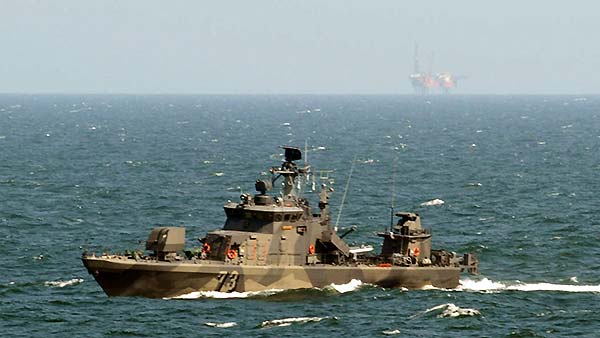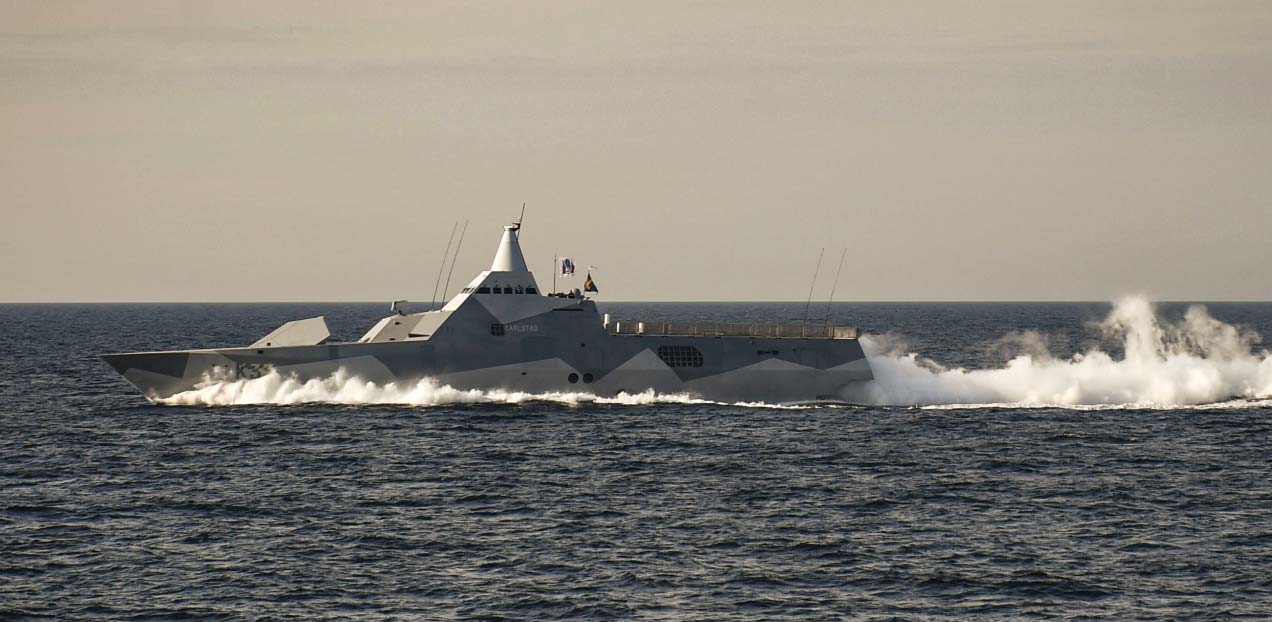What lies beneath… the weaponising of news
One of the latter-day episodes of submarine warfare – or shall we say covert operations – touched on in ‘The Deadly Trade’ (aka ‘The Deadly Deep’) was the alleged intrusion into Swedish waters of a Russian craft in 2014. Such episodes can easily spark armed confrontation, but for luck and the innate mysteries of the undersea environment (which sometimes makes it hard to say definitely what is lurking down there). This was my article from October 2014 on the Swedish episode
Similar controversies were a feature of the Cold War in the Baltic, when the Swedes were heavily taxed sometimes pursuing suspected Russian (and NATO) submarine intrusions into their waters. The most notorious episode was the grounding of a Whiskey Class diesel submarine of the Soviet Navy in October 1981. There was no doubt that Swedish forces had caught the Russians in flagrante making an illegal foray close to Karlskrona, as the boat S-363 was skewered by rocks in full view of the world.

A Soviet Navy submarine of the Whiskey Class underway during the Cold War. A diesel boat of this type ran aground in Swedish territorial waters, late 1981. Photo: US DoD.
What has sparked my return to the topic of the 2014 Swedish intrusions is a story by Elisabeth Braw of the London-based think-tank RUSI that raises some interesting issues on how the media reports such events (and whether or not it is being drawn into an info war between Russia and the West). The answer is yes, especially in the era of so-called fake news, where military operatives of the Kremlin and others states, not least China, and those of some Western powers, are weaponising it (and in some cases have been doing so for some time).
In her ‘Foreign Policy’ article Elisabeth Braw writes: ‘The military could, for example, provide training to a wide range of journalists, and not just about the latest in military equipment but about the wide spectrum of today’s national security threats and what sort of information helps the adversary.’

An image purporting to show a small, suspect object moving on the surface within Swedish waters at the time of the 2014 episode. Issued by the Swedish defence ministry.
However, as we are not officially at war with China and Russia, it’s pretty hard to persuade the free media of democratic countries that they should start censoring themselves against the ‘adversary’. Let’s face it, some of the stuff the defence ministries of Western nations pump out is also propaganda, and it is down to journalists to filter out the crap, in order to gain something close to the truth.
There are things the defence ministries of the democracies can do to foster understanding of complex issues and therefore dominate the news agenda. While journalists should strive to know their subject, report accurately, the navies/militaries of democracies must be as open as possible, establish rapport with the media (and not just the elite who inhabit a capital city). They should, for example, educate journalists in how navies work – especially technical topics that must be demystified via simple language.

The Finnish Navy guided-missile corvette FNS Naantali on patrol in the Baltic. Photo: US Navy.
In her piece Elisabeth Braw does refer to a Finnish effort to educate journalists in the face of what we in the trade used to call ‘jacked up’ stories – the sort of things that has been going on for decades, walking the razor’s edge between truth and making a good headline.
The Finnish military have their own special interest in countering what they perceive as Russian media manipulation. They obviously operate all the time in close proximity to the Kremlin’s forces in the Baltic Sea and ashore. Shortly after Sweden’s mystery submarine intrusion, they experienced their own episode. In spring 2015 Finland’s naval forces even reportedly used low power explosive charges to see off whatever was down there. Explaining the vagaries of detecting and then classifying what it actually was also presented challenges for the Finns.
I gained true understanding of how things work – including trying to pin down what lurks in the deep dark ocean – partly by going to sea (on, over and under it) with navies. I also started out reporting on defence matters in an era when people talked to people. Even serving personnel felt they could talk to journalists without fear of being disciplined for not doing it in a heavily controlled (make that censored) environment.
Often today’s naval/defence spokespersons talk in corporate/technical gibberish, trotting out dull propaganda tropes in their press releases and on social media – instead of using plain language. It makes one suspect they don’t themselves fully understand military and naval operations or their context. In that case, how can they explain anything to journalists?

The Swedish Visby Class corvette HSwMS Karlsand on patrol in the Baltic. Photo: US Navy.
Finally, if the military of the West starts off in an adversarial relationship with journalists then it is onto a loser in a democracy. Of course, that problem does not exist in nations such as Russia, China, North Korea and Iran, for example, where press/media freedom is heavily restricted or even non-existent. The way for defence ministries in the democracies to counter state-controlled ‘fake news’ garbage from so-called ‘adversaries’ is to mount a charm offensive and educate the media, presenting the facts of the case and leaving them to come to their own conclusions.
Don’t blame reporters for not fully understanding the complexities of finding and identifying a potential submarine intruder if you have never made a proper effort to educate and inform them in the first place. Putting out information is not the same as making it comprehensible…if you get what I mean…
Comments
Comments are closed.